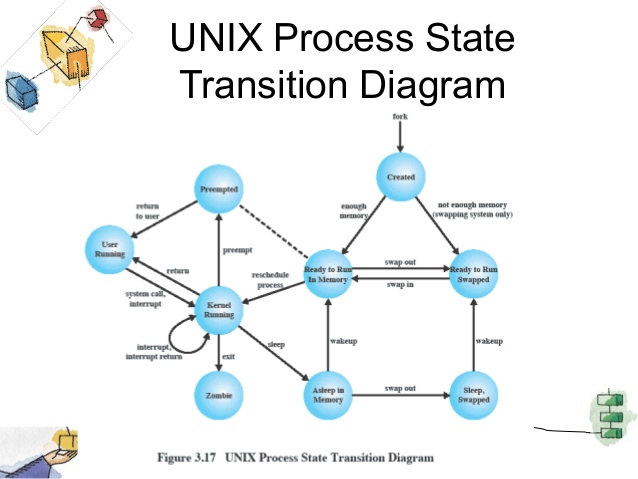

Once the purpose of the process gets over then the OS will kill the process. Process may come to the blocked or wait state during the execution then in that case the processor starts executing the other processes. Once the process is scheduled for the execution, the processor starts executing it. Selecting the process which is to be executed next, is known as scheduling.

Out of the many processes present in the ready queue, the Operating system chooses one process and start executing it. Once the process is created, it will be ready and come into the ready queue (main memory) and will be ready for the execution. These processes complete their execution once the main memory gets available and their wait is finished. Since it is already waiting for some resource to get available hence it is better if it waits in the secondary memory and make room for the higher priority process. Instead of removing the process from the ready queue, it's better to remove the blocked process which is waiting for some resources in the main memory. The suspend ready processes remain in the secondary memory until the main memory gets available.
#UNIX PROCESSES STATES FULL#
If the main memory is full and a higher priority process comes for the execution then the OS have to make the room for the process in the main memory by throwing the lower priority process out into the secondary memory. Suspend readyĪ process in the ready state, which is moved to secondary memory from the main memory due to lack of the resources (mainly primary memory) is called in the suspend ready state. All the context of the process (Process Control Block) will also be deleted the process will be terminated by the Operating system. When a process finishes its execution, it comes in the termination state. When a process waits for a certain resource to be assigned or for the input from the user then the OS move this process to the block or wait state and assigns the CPU to the other processes. Block or waitįrom the Running state, a process can make the transition to the block or wait state depending upon the scheduling algorithm or the intrinsic behavior of the process. If we have n processors in the system then we can have n processes running simultaneously. Hence, if we have only one CPU in our system, the number of running processes for a particular time will always be one.

One of the processes from the ready state will be chosen by the OS depending upon the scheduling algorithm. There can be many processes present in the ready state. The processes which are ready for the execution and reside in the main memory are called ready state processes. The OS picks the new processes from the secondary memory and put all of them in the main memory. Whenever a process is created, it directly enters in the ready state, in which, it waits for the CPU to be assigned. NewĪ program which is going to be picked up by the OS into the main memory is called a new process. The names of the states are not standardized although the process may be in one of the following states during execution. The process, from its creation to completion, passes through various states.


 0 kommentar(er)
0 kommentar(er)
